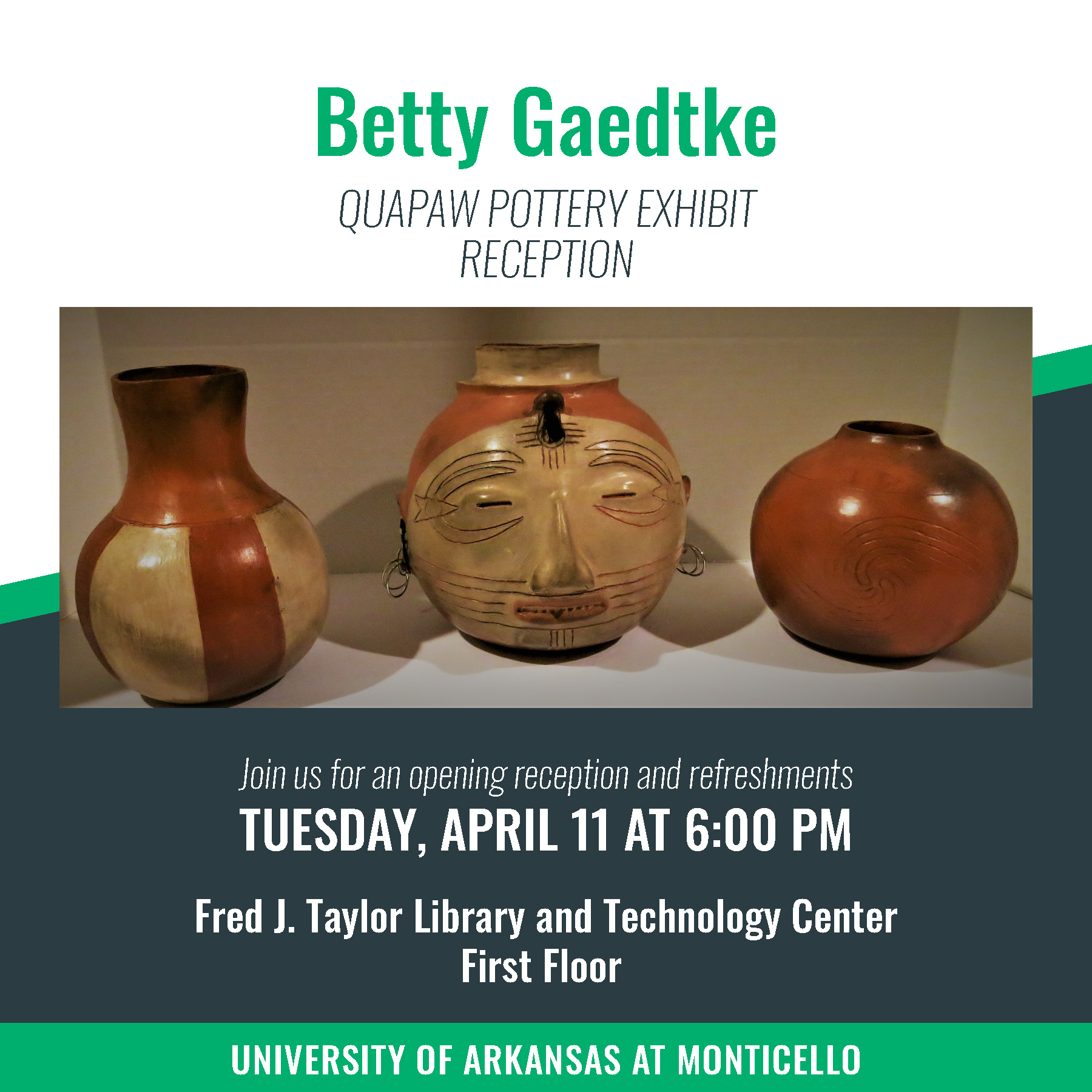UAM NEWS
UAM To Host Public Reception for Quapaw Pottery Exhibit

On Tuesday, April 11, at 6 p.m., the University of Arkansas at Monticello will host a reception to celebrate the opening of a new archeology exhibit that will showcase Quapaw pottery made by artist Betty Gaedtke. The reception will take place on the first floor of the Fred J. Taylor Library and Technology Center, where the exhibit will be housed for the foreseeable future. The reception will include a public lecture given by Gaedtke on the pottery-making process and its spiritual significance to her people. Refreshments will be provided.
The Quapaw Indians are a branch of the Sioux from the upper Ohio River Valley who broke away and went downstream on the Mississippi River, eventually settling along the Arkansas River about 35 miles northeast of current-day Monticello. In 1818, they ceded 30 million acres of land across what is now the southern halves of Oklahoma and Arkansas, including the place where Monticello was later established. “Arkansas” was originally a name applied by other Indians in the region to the Quapaw people.
The Quapaw tribe is renowned for its exquisite pottery, recognized by the presence of nodina red clay; red, white and black decorations; and swirl patterns. The vessels to be housed in this exhibit were created for the Arkansas Archeological Survey to be put on display in Monticello by Betty Gaedtke, or Te-mi-zhi-ka (“little buffalo woman”). Gaedtke is an enrolled member of the Quapaw Nation, a former Council Member and part of the Buffalo clan. Her works are already on display in many repositories, both in Arkansas and in surrounding states. Some of her vessels are ceremonially placed in burials as her people have done for many generations.
The exhibit was funded by the Arkansas Archeological Society through its Bill Jordan Public Education Fund. Before coming to Monticello, the pots are being 3D scanned at the coordinating office of the Arkansas Archeological Survey in Fayetteville so that they may be used as a digital education resource across the state of Arkansas and beyond. The pots may be viewed online through an interactive 3D object viewer or 3D printed for educational use.
For additional information, contact Dr. Matthew Rooney at 870-460-1290.